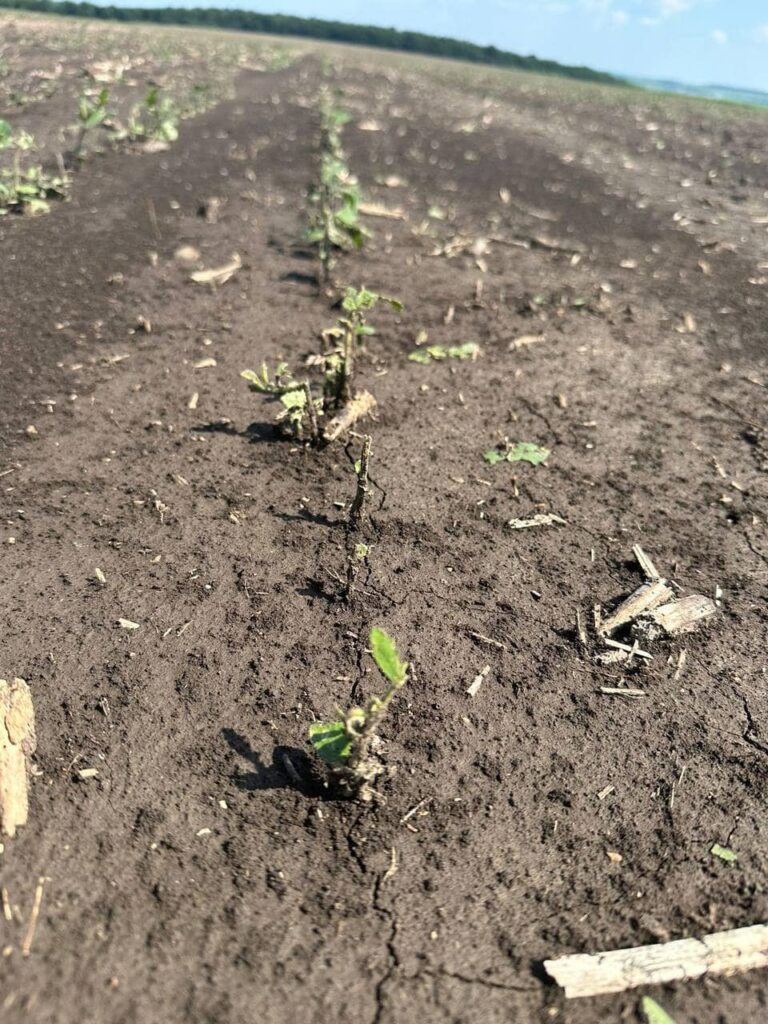The impact of hail on the soybean crop
Recently, many regions of Ukraine experienced heavy hail, which caused significant damage to soybean crops. In such circumstances, it is important to understand how hail affects yields and what measures can be taken to minimize losses.
Impact in the early stages (VE-V1: Seedlings)
- In the early stages, soybeans are particularly vulnerable to damage. Therefore, the plants can only recover if sufficient green mass is retained.
Plants cut below the cotyledon will die 100%.
Impact on the stages (V2-V4: Leaf development)
- During these stages, plants develop more leaves and root systems.
- Damage to leaves and stems can slow growth, but recovery is possible if the growth point is maintained.
Impact during the flowering period (R1-R2: Flowering period)
- Hail can damage flowers and young pods, resulting in reduced yields.
- Plants may recover, but yields will be reduced.
Damage assessment and analysis
- Inspect the fields to identify the type of damage (leaves, stems, pods).
- Count the number of living plants.
*Use standardized methods to count plants per square meter or row.
- Estimate the percentage of plants damaged.
The table shows the results of studies on the effect of defoliation (leaf removal) and population reduction on soybean yield,

Conclusions of the study:
- A slight defoliation (33%) at the R1 stage has almost no effect on yield, while at the R3 stage (pod formation) it leads to a slight decrease (-6%).
- Significant defoliation (66% and 100%) at both stages significantly reduces yields, especially at R3.
- Population decline combined with defoliation leads to significant yield losses, especially at the R3 stage.
Depending on the damage, you need to decide whether to care for the crops (applying fertilizers to stimulate growth and other measures) or to reseed.
Only consider reseeding if the damage is severe, taking into account the costs and possible results.


Write to us
and we will find an opportunity
for cooperation


